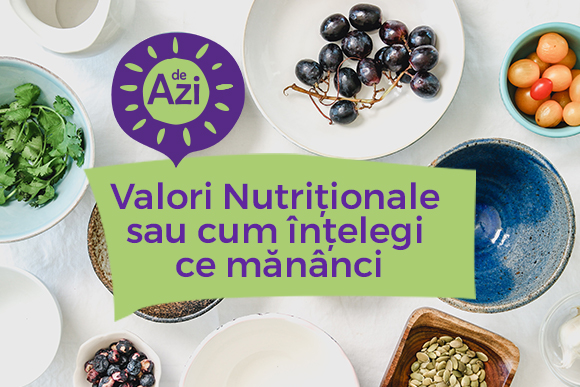Nutritional values or How to understand what you eat

Eating healthy is one of those plans that we put on the wish list before New Year’s Eve. We keep on planning it to become a lifestyle and not just a ’’tick’’ that we check off the list at the end of the day. Eating healthy is not that difficult, on the contrary, it can be so easy, accessible, and even delicious.
Whether you eat at a restaurant or a coffee house, whether you take with you your homemade lunch, there are some simple ideas that can help you make healthier food choices and identify the nutrient-rich foods, so that your diet will be an exemplary one. The hardest thing to do it is to change your habit is your routine. But, working step by step towards changing will improve the change of success. And yet… how can you make healthy choices in your life?
Read the labels
Food labelling regulations are complex, and consumers have a hard time to understand them. How do you make the difference between healthy and less healthy food?
The ingredients appear on the label in descending order: from the one found in the largest amount in the product, to the one found in the smallest one. This information is useful especially for those who have certain food sensitivities, those who want to avoid some foods, those who want to limit the amount of added sugar and those who prefer vegetarian products. Compare the nutritional information from the packaging labels and select only those that have small amounts of added sugar (or not at all), saturated fat and sodium. Some producers sometimes hide big amounts of sugar or unhealthy fat in the packaged food under other names. Choose for products that have natural sugar, not sugar substitutes.
Count the calories
For you to maintain weight control, you need to eat as many calories as you use up from your physical activity. If you want to lose weight, the number of calories you eat must be less than the number you take. At the same time, you can always increase the number of burns and keep the balance.
All the food offers a mix of macronutrients (known under the name of macros) and micronutrients – that you will see on a nutritional label. Macronutrients are the nutritional compounds that our body needs in large quantities and they are built from: fats, carbs (fibre and sugar) and proteins. These supply your energy as calories. Carbohydrates, for example, are important nutrients. It is important to take care at the amount and the number of servings that you eat. They bring a caloric intake of 4 kcal/g. A gram of protein has around 4kcal, a gram of fat = 9kcal.
Focus on your body after you eat
What is the feeling that you have after you eat? If you learn to listen to the reactions of your body to food, you can do more than lose weight. The awareness of the eating experience will help decreasing your negative emotions and it will stimulate new healthy habits and sense of taste. At the same time, it can help you find a more profound relation with the food that you eat, nourishing you in ways that, maybe, you have not tried out until then.
To better understand the signals that your body is sending when you eat, focus on each bite using all your senses. Ask questions like: is it hot, cold? Salty or sweet? Explore even more to identify your flavour. Ask yourself what you find from those ingredients on the label in the taste of what you eat. Explore the food emotionally. Ask yourself what kind of emotion does it wind up: happiness, calm, gratification, shame, or guilt? Try to understand why some of the food make you feel in particular ways. The healthier the food, the better you will feel after you eat.
Eating healthy can be so easy and so smooth because finally you are synchronised with your own body.
Some other tips:
- If you are in the mood for something sweet, choose some fruit; and if you still feel like eating a dessert, try to share it / split it with a friend
- Avoid overeating
- Do not order a variety of food
- Order some vegetables as a garnish or include a salad in your lunch
